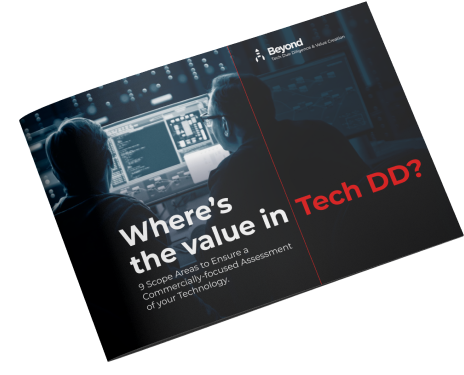A long time ago, during one of my earliest Tech Due Diligence projects, a CIO looked me square in the eye and said:
“Hutton, if the P&L is good enough, then the tech’s good enough.”
I remember flinching. Internally, I disagreed—violently. Having spent my entire professional life in technology, the idea that the quality, elegance, or scalability of a system was secondary felt sacrilegious.
Surely the tech is the business?
Surely the product is the innovation?
Well… not quite.

The Wake-Up Call
Years (and countless DDs) later, I get it.
Really get it.
Market trumps tech. Every time.
You can patch technical debt. You can rebuild a product. You can refactor, replatform, or replace. But you cannot engineer your way out of a market that doesn’t exist or one that doesn’t care.
When there’s strong market pull—when customers need what you’re offering—you can build from there. Even if the tech stack is an architectural Frankenstein, the commercial engine gives you the time and fuel to fix it.
But if there’s no traction, no hunger, no signal?
It doesn’t matter if it’s beautifully built. You’re still going nowhere.
Why This Matters in Tech DD
In Tech DD, especially for growth-stage or later-stage deals, we often obsess over architecture, scalability, tech debt, documentation, test coverage—the works.
But the deeper question that guides the value conversation is:
Does the tech enable a business that the market actually wants?
If the answer is yes, then the tech—regardless of its flaws—is at least aligned with something real. And that’s the foundation you can scale, invest in, and fix.
If the answer is no, then no level of technical excellence can save it. It’s innovation theatre.
Tech is the Enabler, Not the Point
From those magnetic, high-performance cultures we all aspire to build
To the investor returns we chase
To the day-to-day experience of using a product people love…
It all starts with the market.
Tech is just the facilitator.




